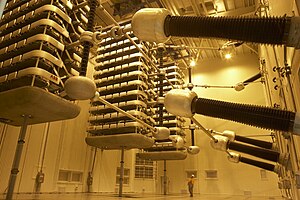 | Michael Schuresko
(touchscreen version of this webpage for iPhone, etc) |
||||||||||||||||||||||||||||
| Latest News | |||||||||||||||||||||||||||||
| News
For more news, see http://mikeschuresko.blogspot.com/search/label/news. |
|||||||||||||||||||||||||||||
| What I'm currently studying | |||||||||||||||||||||||||||||
| I graduated with a PhD from the Department of Applied Math and Statistics in the School of Engineering of the University of California, Santa Cruz. My research was with Prof. Jorge Cortés in the Mechanical and Aerospace Engineering department of University of California, San Diego. Our work was in the general area of robotic control and control theory. I desperately need to hand off maintenance of the web page for the controls research group at UCSC. 
My research sits at the intersection of distributed algorithms and distributed control. Distributed control is the study of how multiple computational units, sensors and actuators can be networked together to control a single system, usually with an emphasis on requiring minimal communication. Distributed algorithms studies similar topics, but without sensing and actuation, and a greater emphasis on computation. I largely deal with problems featuring a swarm of robots communicating over a wireless network. My thesis dealt with problems related to how to constrain motion of robots in a swarm so as not to lose global network connectivity of the swarm. I focussed on ways to do this which require local communication, with the desire of minimizing the amount of communication required. |
|||||||||||||||||||||||||||||
| A brief sketch of my academic and industrial experience | |||||||||||||||||||||||||||||
| I started graduate school intending to study computer graphics, and still have a collection of class projects and flashy demosfrom those days. I chose my current advisor and research area after taking a class on non-linear control theory. Prior to coming to UCSC, I worked for a few years as a programmer at Common Point Inc and the now-defunct Sense8 Corporation I was lucky enough to have the opportunity to write collision-detection systems professionally for one of these companies, and improve an existing collision-detection system for the other.
Previous intern-ships include work on graphics and GIS at TerraSim and working on graphics and robotics in support of machine learning and robot learning research at the Naval Center for Applied Research in Artificial Intelligence. |
|||||||||||||||||||||||||||||
| Papers and cited works | |||||||||||||||||||||||||||||
|
|||||||||||||||||||||||||||||
| Demos, toys, fun, etc. | |||||||||||||||||||||||||||||
|
|||||||||||||||||||||||||||||
| Contact info / Resume. | |||||||||||||||||||||||||||||
|


















 mountains
mountains modified_mandel
modified_mandel tet_at_lees
tet_at_lees waterfall
waterfall sf_night
sf_night dimsum
dimsum MikeSF
MikeSF bigeyes
bigeyes mike_sd
mike_sd museum_outside
museum_outside mike_age_22
mike_age_22 cafe_outside
cafe_outside cloudy_beach
cloudy_beach palm3
palm3 more_of_the_beach
more_of_the_beach some_sort_of_exhibition
some_sort_of_exhibition funny_money
funny_money stylish_cell_tower
stylish_cell_tower palm2
palm2 palm1
palm1 they_always_ran_out_of_coffee
they_always_ran_out_of_coffee blurry_night
blurry_night cancun
cancun